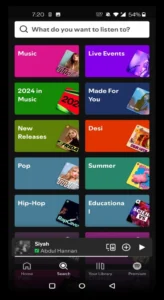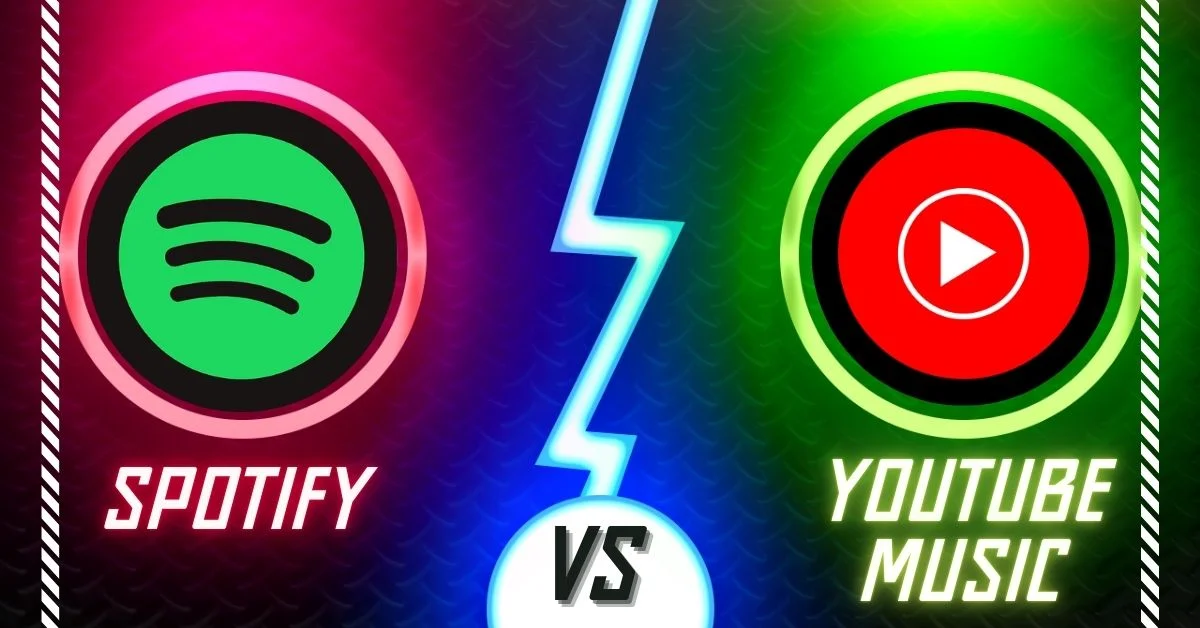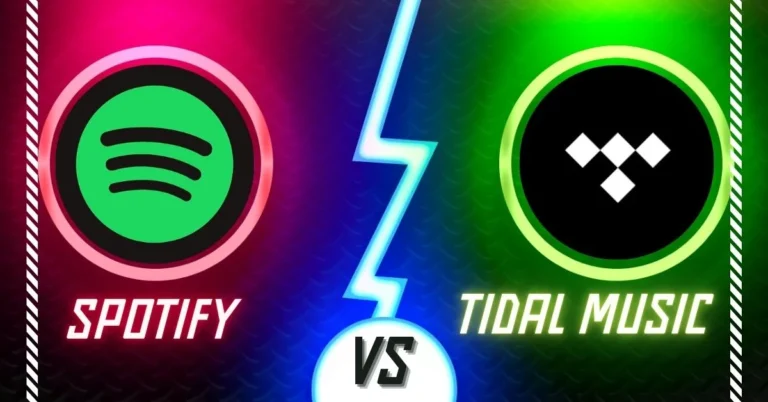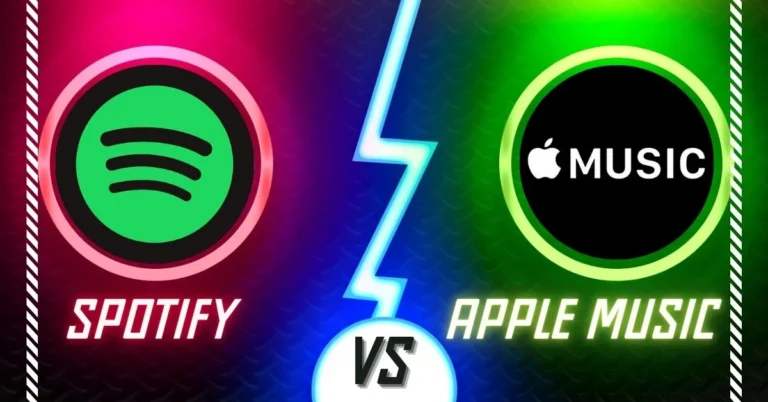Spotify vs YouTube Music : Which one is Best ?
When it comes to music streaming, two apps have completely changed the way we enjoy music and podcasts: Spotify vs YouTube Music. Both have grown, expanded, and taken their place in the hearts of millions. But have you ever wondered which one really stands out? While YouTube Music dominates the market, Spotify has established itself as the leader in music and podcasts. Though it is a tough competition, here are some key facts and figures that show how Spotify has gained an edge over YouTube Music.

Spotify
Spotify was launched in 2008 and is one of the world’s leading music streaming app. With over 100 million tracks and millions of podcasts, it offers users a vast library of content. Spotify is renowned for its personalized music recommendations, such as Discover Weekly and Daily Mix. Available in both free (ad-supported) and premium (ad-free) tiers, Spotify provides a seamless user experience across multiple devices, including smartphones, smart speakers, and gaming consoles.
YouTube Music
YouTube Music, launched in 2015, is Google’s exclusive music streaming platform. It integrates seamlessly with YouTube, offering access to official tracks, music videos, remixes, live performances, and user-generated content. This makes YouTube music different from other platforms. It offers a free, ad-supported version as well as a Premium option, which gives you background playback, offline downloads, and an ad-free experience. It’s a great option for users who enjoy the visual aspect of music and appreciate the variety of content that YouTube offers beyond traditional tracks.

Spotify vs YouTube Music: Which One is Better?
While there is some serious competition between these two music giants, I will focus on their key features to see which one adds more value. While their services look very similar, as a regular user, I can pick a winner by comparing things like content, sound quality, device compatibility, pricing, search capabilities, and the benefits each provides.
Spotify Vs YouTube Music: FREE Features
| Features | Spotify | YouTube Music |
| Access to Entire Library | Limited Library Access | Yes |
| Playback Mode | No playback mode | Song & Video |
| Audio Quality | 128 Kbps | 160 Kbps |
| Ad Skipping | Can’t skips Ads | After 5 seconds |
| Song Skips | 6 skips/hour | Unlimited |
| Play in the background | Can’t skip Ads | No |
Music Library and Content Variety
Spotify
Spotify offers access to over 100 million songs, including major label releases, independent artists, and a growing library of podcasts. However, it does not have official music videos or user-uploaded content.
YouTube Music
Thanks to the extensive library of YouTube, YouTube Music offers official tracks, remixes, live performances, and user-uploaded content. This makes it ideal for discovering rare versions of songs, covers, and niche music content.
Audio Quality
Spotify
Spotify Premium streams at up to 320 kbps, which provides good sound quality for most listeners. It has announced plans for Spotify HiFi (lossless audio), but it is not yet widely available.
YouTube Music
YouTube Music offers a maximum streaming quality of 256 kbps for Premium subscribers, which is slightly lower than Spotify’s. However, it prioritizes video and music content over high audio.
Personalization and Music Discovery
Spotify
Spotify excels in music discovery with features like Discover Weekly, Daily Mix, and Release Radar, which use advanced AI algorithms to offer personalized playlists based on listening habits.
YouTube Music
YouTube Music similarly provides tailored recommendations derived from the listening and viewing history on YouTube Music. Its “Your Mix” playlist includes a mix of familiar and new songs, though its algorithms are not as advanced as Spotify’s.
Pricing and Plans
Spotify
Free Tier: Comes with ads, limited skipping, and no offline playback option.
Premium Plan: $9.99/month for a completely ad-free experience along with offline downloads.
Offers Duo, Family, and Student plans.
YouTube Music
Free Tier: Ad-supported but with background playback disabled.
YouTube Music Premium: costs $9.99/month and gives you ad-free listening, background playback, and offline downloads.
For $11.99 per month, YouTube Premium not only includes YouTube Music, but also removes ads from all YouTube videos.
User Interface and Experience
Spotify
Spotify has a sleek, user-friendly interface that feels intuitive and runs smoothly across all your devices. It’s easy to create playlists, explore new music, and manage playback.
YouTube Music
YouTube Music has a visually inviting interface, especially attractive for users who appreciate video content. However, it can sometimes feel combining music and video recommendations.
Platform Compatibility and Device Integration
Spotify
Spotify is available on almost all platforms, including iOS, Android, Windows, macOS, smart TVs, gaming consoles, and smart speakers. It works effortlessly with Google Assistant, Alexa, and Siri, making it easy to control with your voice
YouTube Music
YouTube Music is accessible for iOS, Android, and web browsers. It integrates well with Google devices like Google Home and Chromecast, but has limited integration with non-Google ecosystems compared to Spotify.
Spotify vs Youtube Music Unique Features
| Spotify | YouTube Music |
| Podcasts: A large library of podcasts, including exclusives like “The Joe Rogan Experience.” | Music Videos: Easy access to official videos and live performances. |
| Collaborative Playlists: Create and share playlists with friends. | User-Uploaded Content: Access to unique covers, remixes, and rare tracks. |
| Spotify Wrapped: Annual summary of listening habits, a popular feature among users. | Switch Between Video and Audio: Easily toggle between audio-only and video playback. |
Conclusion
Choose Spotify if you prioritize audio quality, music discovery, a large podcast library, and seamless integration across multiple devices. It’s ideal for those who want a polished and highly personalized music experience. Choose YouTube Music if you want a variety of content like music videos, remixes, and live performances. It’s perfect for users who already enjoy YouTube and want access to both video and audio content in one platform. In the end, the best choice comes down to your personal music preferences.






